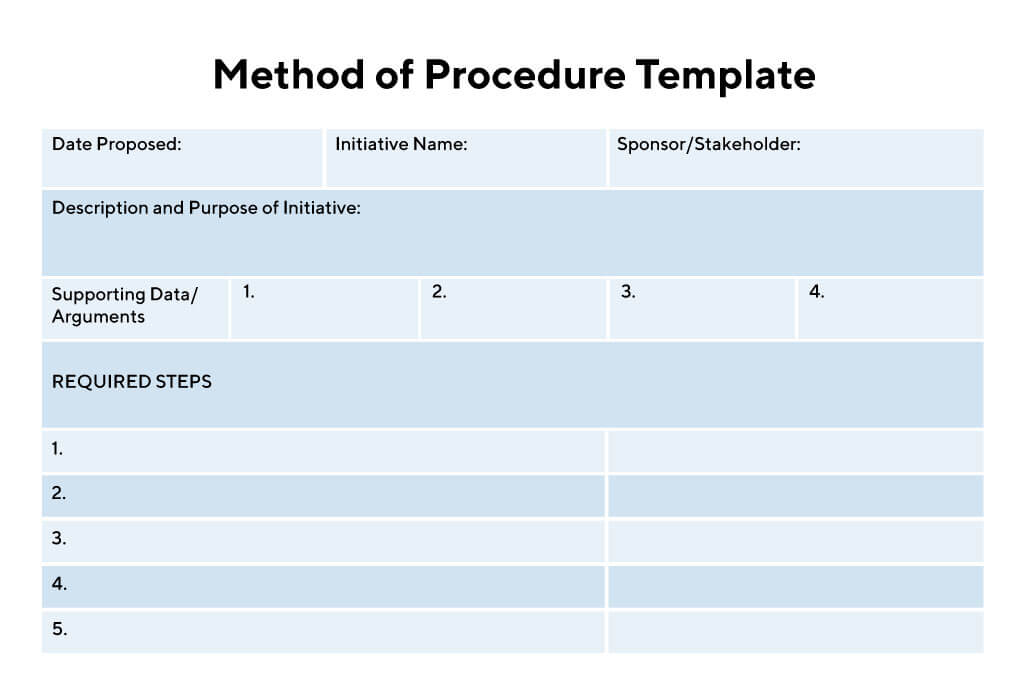What is a Method of Procedure?
A method of procedure (MOP) is a step-by-step guideline for completing a project. Think of it as a recipe for accomplishing a business task. Businesses use MOPs to remove the guesswork and reduce human error. A company might write a MOP to guide employees through adding a server to the network, or for breaking ground on a construction project.
Note: A method of procedure is different from a standard operating procedure (SOP). An SOP is also a written guideline for completing a business task. However, it focuses on how the employee should handle the task. A MOP focuses on what exactly the employee needs to do, step by step. In this sense, an SOP allows the employee more freedom and discretion.
Where did the Method of Procedure Guideline Originate?
The method of procedure originated for technical employees in fields such as electrical work, construction, and data center management.
These businesses developed the MOP approach to make sure their teams were performing tasks in a specific sequence, using particular tools, taking the right safety precautions, and recording each step of their work.
Managing a data center, for example, is a delicate balancing act. An employee who deviates from the accepted procedure could introduce errors into the system or even delete critical data. Working from a script proven safe and effective — the written method of procedure — can reduce these risks.
How can a Product Team Use a Method of Procedure?
Using methods of the procedure can serve a product team in several ways. For example, the team can use a MOP to create:
- A predictable process for introducing new product requests from stakeholders.
and…
- A consistent standard for adding new initiatives to the product roadmap.
A Method of Procedure Template for Product Managers
If a product team wanted to create a consistent method for evaluating new initiatives, it might use a MOP. As an example, here is a method of procedure template for submitting an initiative to the product team.

For anyone in the company to propose adding an initiative to the product roadmap, they would submit a proposal to their product manager. This proposal would have to include a description of the initiative and supporting evidence that it would add value to the company.
Assuming the PM found the proposal was worth taking to the next step, that step would be meeting with the core team to weigh the costs and benefits of adding this initiative to the company’s workload. If the team decided the benefits outweighed the costs, then they would break the project into smaller user stories and tasks, which the product owner would add to the backlog. Moreover, the PM would place the project on the roadmap.
Using a method of procedure like the one above can be useful because PMs often receive product ideas and requests from many stakeholders, in many different ways. With a standard process for accepting ideas for review, PMs can create a more consistent approach to analyzing new ideas. Also, stakeholders across the company will know they have to follow the procedure to have their proposals even considered. This will force those stakeholders to pre-vet their ideas and to submit only those initiatives they have reason to believe will add value.

Related Terms: roadmap, backlog, sprint planning, prioritization, weighted scoring
Want to learn how to better optimize your roadmap processes? 

